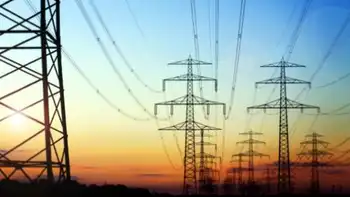Stray voltage costs Toronto Hydro $14 million to fix
By National Post
CSA Z462 Arc Flash Training - Electrical Safety Essentials
Our customized live online or in‑person group training can be delivered to your staff at your location.

- Live Online
- 6 hours Instructor-led
- Group Training Available
Mobile detection units, which began as a temporary measure after stray voltage killed a west-end dog in November of 2008, have been made permanent.
“That work will carry on now forever, because we’ve got an old system and if there’s not contact voltage there today, it doesn’t mean it won’t be there tomorrow. It’s the kind of thing that is never finished really,” said Blair Peberdy, Toronto Hydro’s vice-president.
“Torontonians should be able to walk down the street without worrying about getting shocked by our equipment.”
After a child was shocked in Regent Park at the end of January, Toronto Hydro escalated its detection efforts to include more rigorous physical inspections of every one of the cityÂ’s 13,000 handwells, dwarfing the initial estimated $6-million cost of the inspection project.
All 600 Hydro workers were reassigned, working around the clock to complete the inspections, which wrapped up early in March.
The corporation revealed that added another $14.3-million to operating costs as it released financial statements for the first six months of the year. Toronto Hydro made $21.4 million, down more than 40% on the same period in 2008, when it took $37.6-million in profits.
David OÂ’Brien, president of Toronto Hydro, said that a new year hike in distribution rates absorbed some of the costs, but blamed the drop in part on the inspection project.
“Our results were negatively impacted by a reduction in consumption from our customers due to the current economic downturn and due to costs associated with the remediation of safety issues on our system in February,” he said.
In addition to the handwell inspections, Toronto Hydro also opened up 40,000 lampposts. Work crews detected stray voltage in only 228, or less than half a percent of cases.
“In our opinion, even 228 is too high. We’re glad it wasn’t more and it’s a serious concern to us,” Mr. Peberdy said. “It was worth it and we would do it again. We had a tragic situation with two pets killed and a report of a child being shocked, so it’s not something we hesitated about.”
But for Max Mancuso, an ad-agency creative director whose dog Pierre was the first killed by stray voltage, the reaction wasnÂ’t quick enough. Almost three months passed between the death of his seven-year-old king shepherd and the physical inspections.
“I’m glad in the end they initiated that program, but a lot of stuff had to happen in order for something to get done and I’m not sure if that was necessary,” he said.
Mr. Peberdy said there have been no recent reports of stray voltage, but he says that could change in the winter. Faulty wiring in the handwells, which link nearby streetlights and advertising to the main grid, is thought to have combined with salty water to electrify their metal lids.
“We’ll probably be commencing public awareness communications again as we move through October and into November,” he said.
Mr. Mancuso says he is still nervous of handwells after losing his dog last year. He says heÂ’s dreading his first winter with his new eight-month-old Labrador puppy, Bishop.
“They’re impossible to avoid, so it’s kind of scary. I don’t know what I’m going to do,” he said. “In the spring, I stepped on one of the grates and it rattled. I guess it was loose or something, but it sent a shiver down my spine and I jumped in the air. It scared the heck out of me.”
According to Toronto Hydro, all new handwells constructed in the city will get non-conductive fibreglass lids, but Mr. Mancuso may have to wait before he can feel completely safe. Mr. Peberdy said the corporation is working with OntarioÂ’s Electrical Safety Authority to develop a plan for replacing the old metal lids on all the existing handwells in the province. No target date has been set.











